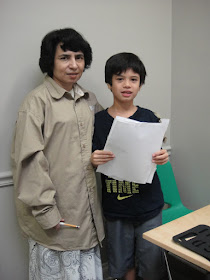To Rick,
I am glad you asked that question. It's good to know you want to make autistic people feel safe and accepted. I think many autistic people are shy because we are different than most. I have difficulties in making friends because my communication is so slow and labored. I also need someone to help me communicate by holding my keyboard and prompting me to type. People wanting to talk to me have to be very patient. Most people don't have time to wait for me.
People show they are really interested in me if they have patience to interact with me. They show patience by waiting for me to spell even if they lose time because of me. I like when people talk to me normally even if I don't respond to them. I know what is being said and how to respond. I just need time to organize myself to type it out. This sometimes takes awhile depending on how my body is cooperating. I need more prompts if my body is acting more distracted. I need people to realize I still want to communicate even if I am struggling. I may look like I don't want to be bothered. But it is my mind trying hard to get my body to move to communicate with you.
I love people when they give me the time to talk with them. Learning to take the time and patience to interact with me is showing you really care to get to know me.
From,
Philip
Me and Ranger Dan.
He biked with me so I could be part of the annual bike trip with Battalion.
Copyright 2017 Philip Reyes. All rights reserved.
Copyright 2017 Philip Reyes. All rights reserved.


